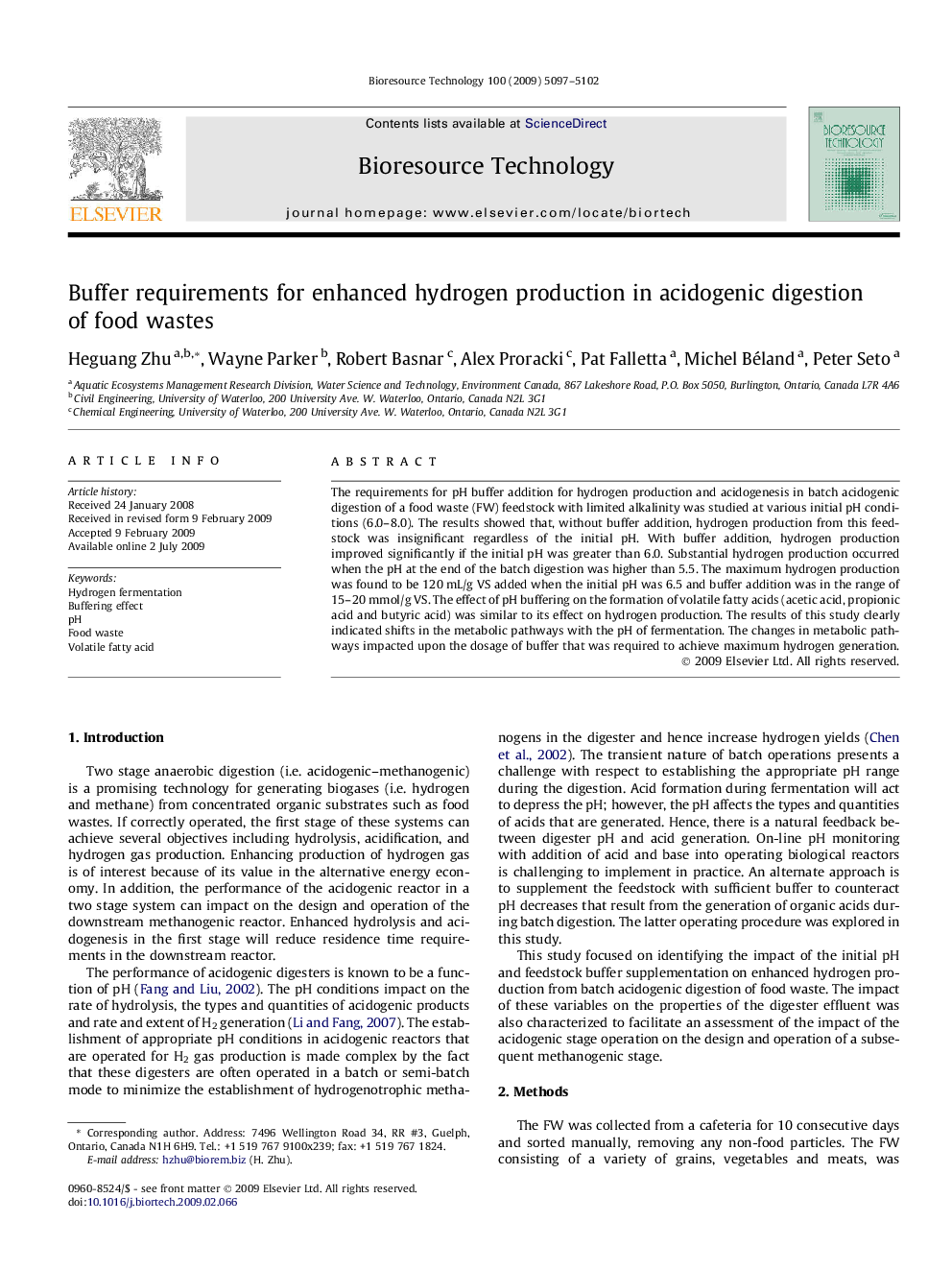| Article ID | Journal | Published Year | Pages | File Type |
|---|---|---|---|---|
| 684462 | Bioresource Technology | 2009 | 6 Pages |
Abstract
The requirements for pH buffer addition for hydrogen production and acidogenesis in batch acidogenic digestion of a food waste (FW) feedstock with limited alkalinity was studied at various initial pH conditions (6.0-8.0). The results showed that, without buffer addition, hydrogen production from this feedstock was insignificant regardless of the initial pH. With buffer addition, hydrogen production improved significantly if the initial pH was greater than 6.0. Substantial hydrogen production occurred when the pH at the end of the batch digestion was higher than 5.5. The maximum hydrogen production was found to be 120Â mL/g VS added when the initial pH was 6.5 and buffer addition was in the range of 15-20Â mmol/g VS. The effect of pH buffering on the formation of volatile fatty acids (acetic acid, propionic acid and butyric acid) was similar to its effect on hydrogen production. The results of this study clearly indicated shifts in the metabolic pathways with the pH of fermentation. The changes in metabolic pathways impacted upon the dosage of buffer that was required to achieve maximum hydrogen generation.
Related Topics
Physical Sciences and Engineering
Chemical Engineering
Process Chemistry and Technology
Authors
Heguang Zhu, Wayne Parker, Robert Basnar, Alex Proracki, Pat Falletta, Michel Béland, Peter Seto,
